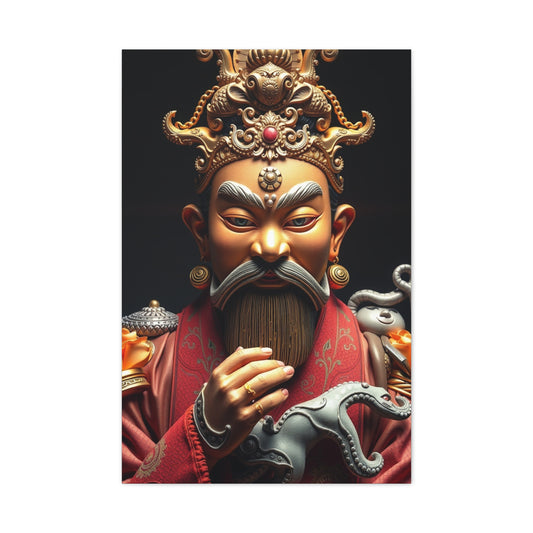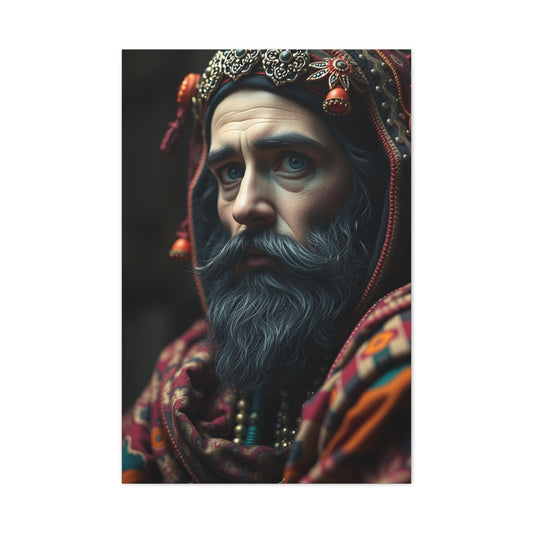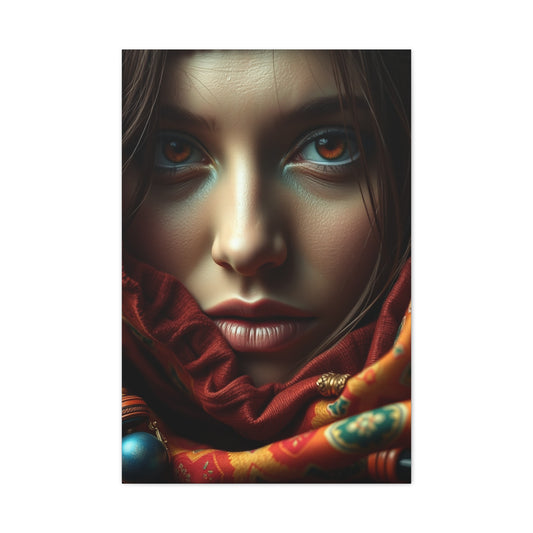Are you trying to find a way to use your Nikon lens with your Canon DSLR? Many photographers face this dilemma, especially those who own lenses for one brand and switch or expand their gear with another. Despite the fierce competition between Nikon and Canon, using lenses across these two systems can be possible with the right lens adapter. This guide will take you through the process of using a Nikon to Canon lens adapter, highlight the steps involved, and examine the potential limitations. We will also dive into the different types of adapters available in the market, helping you make the best choice for your photography needs.
Understanding the Basics: Nikon vs. Canon Lens Mount Compatibility
When considering the use of a Nikon lens on a Canon DSLR, it’s essential to first understand the fundamental concept of lens mounts. A lens mount is the physical and mechanical interface that connects a lens to a camera body. Every camera manufacturer designs its own proprietary lens mounting system, which typically means that lenses from one brand cannot be directly attached to another brand’s camera body. This incompatibility often requires the use of an adapter to bridge the gap. In the case of Nikon and Canon, their differing lens mounts and flange distances create the need for specific adapters.
Nikon Lens Mounts
Nikon offers two primary types of lens mounts: the F-mount and the Z-mount. Each of these mounts serves different camera systems, and understanding their characteristics is vital for choosing the right adapter for mounting a Nikon lens on a Canon DSLR.
F-mount Lenses: The Nikon F-mount, introduced in 1959, has become one of the most enduring and widely used lens mounts in the world, particularly for digital and film SLR cameras. Nikon F-mount lenses can be used on Canon DSLR cameras, provided the appropriate Nikon F-mount to Canon EF adapter is used. The F-mount is incredibly versatile, with decades of development and a vast selection of lenses available. The mount design ensures that Nikon F-mount lenses are largely interchangeable across different Nikon camera bodies, but these lenses can also be adapted to Canon DSLR systems.
For photographers looking to use Nikon F-mount lenses on a Canon DSLR, it’s crucial to select an adapter designed to maintain the lens’s functionality and physical compatibility with the Canon camera. The availability of Nikon F-mount lenses in the used market also makes it an attractive option for those looking to expand their lens collection on a budget.
Z-mount Lenses: The Z-mount is a more recent development, introduced by Nikon for their mirrorless cameras, including the Z6 and Z7 models. This mount features a larger diameter than the F-mount, designed to optimize performance on Nikon's mirrorless camera systems. Unfortunately, Z-mount lenses are not compatible with Nikon’s older DSLR models or with Canon DSLR cameras. The Z-mount's flange distance and larger diameter present significant challenges when it comes to adapting lenses to other camera bodies, making it incompatible with most adapters designed to fit Nikon F-mount lenses on Canon cameras.
Since Z-mount lenses are designed for Nikon's mirrorless cameras and are built to take advantage of their specific features, they cannot be adapted to Canon DSLR cameras due to fundamental design differences. Therefore, if you own Nikon Z-mount lenses, you'll need to consider purchasing lenses specifically designed for Canon cameras, or opt for a mirrorless system like the Canon EOS R series that utilizes the RF-mount system.
Types of Nikon F-mount Lenses
Within the Nikon F-mount family, there are different variations of lenses, each with specific characteristics that can impact their compatibility with adapters. Understanding these variations can make a significant difference in your decision-making process when choosing an adapter. Let’s take a look at the different types of Nikon F-mount lenses.
AI-type, AI-S, and D-type Lenses: These classic Nikon lenses feature a manual aperture ring, allowing photographers to easily control the aperture directly on the lens, even when using an adapter. This makes the AI-type, AI-S, and D-type lenses highly compatible with adapters, as manual aperture control is straightforward. When using these lenses with a Nikon to Canon lens adapter, you retain the ability to manually adjust the aperture to your preferred settings without relying on the camera’s electronic controls.
The key advantage of using AI-type, AI-S, and D-type lenses with an adapter is the ease of manual control over both focus and aperture settings. These lenses are mechanically designed, so there are no complex electrical signals or interfaces to worry about, which is a crucial factor when adapting lenses from one brand to another.
G-type and E-type Lenses: These are modern Nikon lenses that do not feature a manual aperture ring. Instead, they rely on electronic communication between the lens and the camera to control the aperture. The G-type and E-type lenses are designed to work with Nikon DSLRs that have electronic aperture control. However, when using these lenses with an adapter on a Canon DSLR, the lack of an aperture ring becomes a challenge.
To adapt Nikon G-type and E-type lenses for use on a Canon camera, you'll need an adapter that includes an integrated aperture control ring. This ring allows you to manually adjust the aperture even though the lens itself lacks an aperture control mechanism. This functionality is critical because without it, you would be unable to set the aperture manually, making it difficult to achieve the desired exposure for your photos.
For those who plan to use their Nikon G-type or E-type lenses on a Canon camera, selecting an adapter with an aperture control ring is a must. These adapters can often be found in higher-end models, such as those offered by Novoflex, which feature robust, durable build quality and precise aperture control adjustments. Without an integrated aperture control, the G-type and E-type lenses would only function at the maximum aperture setting, limiting creative control over depth of field and exposure.
Key Considerations When Using a Nikon Lens on a Canon Camera
When attempting to use a Nikon lens on a Canon DSLR, there are several technical factors that need to be taken into account to ensure optimal performance. These considerations range from mechanical compatibility to functional limitations:
Flange Distance: Flange distance refers to the space between the lens mount and the image sensor in the camera. For Nikon cameras, the flange distance is 46.5mm, whereas for Canon cameras, the flange distance is 44mm. Because the Nikon flange distance is greater, this provides a bit of extra room (2.5mm) for an adapter to fit in between the camera body and the lens, which is important when adapting Nikon lenses to Canon bodies. This slight difference allows for proper focus, including infinity focus, when using Nikon lenses on Canon cameras.
Autofocus and Electronic Communication: A significant drawback of using a Nikon lens on a Canon DSLR is the loss of autofocus functionality. Autofocus systems on both Nikon and Canon cameras rely on electronic signals between the lens and the camera. Since these signals are disrupted when using an adapter, autofocus will not function. This means that you will need to rely on manual focus when using adapted lenses, which can be slower and more cumbersome, especially for fast-moving subjects.
Aperture Control: As discussed earlier, Nikon lenses with an aperture ring (AI, AI-S, D-type) are easier to use with an adapter because they allow manual control over aperture settings. However, with G-type and E-type lenses, the lack of an aperture ring means you’ll need an adapter that includes an integrated aperture control system to manually adjust the aperture. Otherwise, the lens will default to the widest aperture, restricting control over depth of field and exposure.
Image Stabilization: Image stabilization (IS) features, such as Nikon’s Vibration Reduction (VR), will not work when using an adapter. This is because the stabilization mechanism relies on the lens’s electronic communication with the camera. Without that communication, the stabilization system cannot be activated, potentially making handheld photography in low-light conditions more challenging.
Exposure and Metering: When using adapted lenses, light metering may still function, but it might not be as accurate as with native lenses. This is especially true for newer Nikon lenses, which rely heavily on electronic signals for exposure control. If precise exposure settings are necessary, it may be helpful to use a handheld light meter or take test shots and adjust manually until you achieve the desired exposure.
Canon Lens Mounts: A Comprehensive Overview
When considering the use of Nikon lenses with Canon DSLR bodies, understanding the differences in lens mounts between these two camera giants is essential. Canon, much like Nikon, has developed multiple lens mounts over the years, each tailored to specific camera systems. These lens mounts are crucial for determining compatibility with various lenses, including Nikon lenses adapted for use on Canon cameras. To navigate this challenge, it is important to familiarize yourself with the Canon lens mount types and how they correspond to the Nikon lens mount system. Let's dive into the three main types of Canon lens mounts and how they relate to adapting Nikon lenses to Canon DSLR systems.
1. EF Mount: Canon's Standard Full-Frame Lens Mount
The EF mount is the most widely used Canon lens mount, introduced in 1987 with the launch of the Canon EOS system. Canon's full-frame DSLR cameras, such as the EOS 5D Mark IV and the EOS-1D series, rely on this mount. The EF mount is designed to work with a broad range of Canon lenses, including standard zooms, primes, and telephoto lenses, across its full-frame sensor cameras.
One of the most significant features of the EF mount is its electronic communication between the camera body and the lens, which enables features like autofocus, image stabilization, and aperture control. This system has made the EF mount particularly popular among professional photographers and videographers, as it offers fast autofocus and excellent image quality, making it an ideal choice for a wide variety of shooting conditions.
When it comes to adapting a Nikon F-mount lens to a Canon EF mount, it is the most common type of adapter used. Nikon F-mount lenses can easily be paired with a Canon DSLR using a Nikon F to Canon EF adapter. This compatibility ensures that Nikon lenses, which are more common in the second-hand market, can be put to use without needing to invest in new Canon-specific lenses. However, it’s important to note that while the physical connection can be made, features such as autofocus and electronic aperture control may not function unless you are using an adapter that includes integrated controls.
2. EF-M Mount: Canon's Mirrorless Lens Mount for APS-C Cameras
The EF-M mount is designed for Canon’s mirrorless cameras with cropped sensors, such as the EOS M series (e.g., EOS M50, EOS M6). The EF-M mount is more compact than the EF mount, as it is optimized for the smaller, mirrorless sensor system. The EF-M mount features a shorter flange distance (the distance from the lens mount to the camera sensor), which makes it ideal for mirrorless cameras. The shorter flange distance allows for faster autofocus and the ability to design more compact and lightweight lenses, making it perfect for travel and street photography.
The EF-M system, however, is not directly compatible with Canon’s full-frame or APS-C DSLR cameras. Canon's decision to create a new, smaller mount with the EF-M system was a strategic move to differentiate their mirrorless cameras from traditional DSLRs and to encourage more compact designs. EF-M lenses are designed specifically for Canon's mirrorless cameras, and they cannot be used on Canon DSLRs without a lens adapter.
Using a Nikon F-mount lens on a Canon EF-M mount camera is a bit more challenging compared to adapting lenses for Canon’s EF mount. While there are adapters available for connecting Nikon F-mount lenses to Canon EF-M bodies, you will likely face limitations in functionality, such as autofocus and aperture control. As these limitations arise from differences in flange distance and electronic communication, you may need a specialized Nikon F to Canon EF-M adapter that facilitates manual control over aperture and focus.
3. RF Mount: Canon’s Newest Full-Frame Mirrorless Lens Mount
Canon introduced the RF mount in 2018 as part of their full-frame mirrorless camera system. Cameras such as the Canon EOS R, EOS RP, and EOS R5 are equipped with the RF mount, offering a larger lens mount diameter and shorter flange distance compared to the EF mount. This innovation allows Canon’s RF lenses to offer better optical performance and faster autofocus, making it a significant advancement for Canon's mirrorless cameras.
The RF mount was specifically designed to deliver higher-quality images with faster, more accurate autofocus, which is crucial for both professional photographers and videographers who demand quick subject tracking and sharp, detailed images. The design of the RF mount allows for lenses to be closer to the camera’s image sensor, resulting in better overall optical performance, such as less distortion and more precise image rendering.
Using a Nikon lens on a Canon RF mount requires the same principles as adapting lenses for the Canon EF mount, but the adapter must be specifically made for the RF system. At present, there are Nikon F to Canon RF adapters available, but similar to adapting to the EF mount, features such as autofocus, image stabilization, and aperture control will be compromised unless the adapter includes manual controls for these features. Given that RF lenses are specifically engineered for Canon's mirrorless systems, using non-native lenses on this mount might hinder the optimal performance of the camera.
Adapting Nikon Lenses to Canon Lens Mounts
When adapting Nikon F-mount lenses to Canon camera bodies, it’s crucial to determine which Canon lens mount system you will be working with. The most common adapter for this purpose is a Nikon F-mount to Canon EF mount adapter, which allows you to mount Nikon’s F-mount lenses on Canon’s DSLR and mirrorless cameras with an EF or RF mount. However, it is important to note that the shorter flange distance of the Canon EF-M and RF mounts may limit the types of adapters available.
Here are key points to consider:
Canon EF Mount: This is the most straightforward and compatible option for adapting Nikon F-mount lenses. The wide availability of adapters ensures that Nikon lenses can be easily mounted onto Canon full-frame DSLR cameras. However, as previously mentioned, manual focus and aperture control will be required, as autofocus and electronic aperture settings will not work unless the adapter offers integrated controls.
Canon EF-M Mount: Adapting a Nikon F-mount lens to the Canon EF-M mirrorless system can be more complicated. The compact nature of the EF-M system makes it harder to create an adapter that functions effectively. Users may lose certain automated features, and focusing may need to be done manually.
Canon RF Mount: The RF system’s superior optical quality means that adapting lenses can result in some performance loss, but adapters are available for Nikon lenses on Canon RF mirrorless cameras. Similar to the EF-M system, using manual control for focusing and aperture is the most effective approach when using Nikon lenses on a Canon RF mount.
Key Considerations for Choosing the Right Adapter
When selecting an adapter for using Nikon lenses on Canon DSLR or mirrorless cameras, there are several factors to consider:
Build Quality: Ensure that the adapter is made from durable materials such as metal to ensure longevity and resistance to wear and tear. A sturdy, well-constructed adapter is essential for reliable performance, especially when frequently mounting and dismounting lenses.
Electronic Controls: If you are using Nikon G-type or E-type lenses, which lack a manual aperture ring, it’s crucial to choose an adapter that offers integrated aperture control. This feature allows you to manually adjust the aperture even if the lens itself does not have a dedicated aperture ring.
Manual Focus: Since autofocus will not function when using an adapter, you will need to be comfortable with manual focusing. Some adapters come with focus confirmation features that make it easier to achieve accurate focus.
Lens Compatibility: Check the compatibility of the specific Nikon lens with the adapter. Some Nikon lenses, particularly those with built-in electronic components, may require a more advanced adapter that supports electronic communication between the lens and the camera.
Choosing the Right Nikon to Canon Lens Adapter
Once you have identified the lens mounts of both your Nikon lens and Canon camera, the next crucial step is selecting the right adapter. Adapting lenses between brands like Nikon and Canon can significantly broaden your photography options, but it’s essential to choose the right tool for the job. With a wide range of adapters available, you will need to carefully consider factors such as price, build quality, and functionality before making your decision. Let's break down the key aspects you should take into account when selecting a Nikon to Canon lens adapter.
Types of Nikon to Canon Adapters
There are various Nikon to Canon adapters on the market, with different price points, features, and build qualities. Below, we will explore the options in greater detail to help you make a more informed decision.
Affordable Budget Adapters
For those who are new to the idea of adapting lenses or simply don’t want to make a large financial commitment upfront, there are budget-friendly options available. Adapters like the K&F Nikon to Canon adapter typically cost around 18.99€, making them an accessible choice for many photographers. These types of adapters serve the basic function of mounting a Nikon lens onto a Canon DSLR or mirrorless camera.
While these affordable adapters work well for basic usage, they do come with some limitations. One of the main downsides is the lack of advanced features like aperture control. Nikon's G-type and E-type lenses, which lack manual aperture rings, require an adapter with integrated controls. Budget adapters generally don’t include this feature, meaning users may have difficulty controlling the aperture on such lenses. Additionally, these lower-cost adapters may be made from less durable materials like plastic or lightweight metal alloys, which can affect their long-term reliability.
Budget adapters can still be an excellent choice for casual users or those who primarily use manual aperture lenses (like AI-type, AI-S, or D-type lenses). However, if you are looking to make the most of your Nikon lenses, especially with modern G-type and E-type lenses, you may want to invest in a more advanced adapter.
Premium Adapters
At the higher end of the market, premium Nikon to Canon adapters such as those made by Novoflex can cost upwards of 170€. These adapters generally offer superior build quality and additional features that justify the higher price. Premium adapters often come equipped with manual aperture control, which is particularly useful for Nikon lenses that lack an aperture ring. This feature enables users to manually adjust the aperture on G-type and E-type lenses, compensating for the lack of electronic aperture control between Nikon and Canon systems.
One of the primary advantages of premium adapters is their build quality. Many high-end adapters are constructed with metal components, which provide better durability and stability, especially when using heavy lenses. Metal adapters are particularly important if you plan on regularly mounting and dismounting lenses from your camera. They are more resistant to wear and tear than plastic adapters and are less likely to break or wear down after extended use.
Premium adapters like those from Novoflex are often designed with greater precision, ensuring a tight and secure fit between your lens and camera body. This precision reduces the risk of light leaks, damage, and loose fittings, which can negatively affect your image quality. These adapters are ideal for professional photographers or enthusiasts who demand high-performance lenses and the ability to control aperture settings manually.
In addition to providing aperture control, some premium adapters include focus confirmation chips that help you manually focus more effectively, offering the same level of focus assist you would receive from native lenses. This is an especially useful feature for those who are new to manual focusing or those using telephoto lenses, where focusing can be challenging.
Mid-Range Adapters
While budget and premium adapters offer distinct benefits, there is also a thriving market for mid-range adapters that strike a balance between affordability and functionality. These adapters generally cost between 40€ to 100€ and often include features such as manual aperture control, solid metal construction, and improved focus accuracy compared to budget options.
For example, Fotodiox offers well-made adapters that support manual aperture control for Nikon lenses. These adapters are typically designed with metal bodies for durability and can be a great option if you want more functionality than a budget model but don’t need the extra premium features of higher-end adapters.
Mid-range adapters are ideal for photographers who use a variety of Nikon lenses, from manual aperture types to more modern lenses, and are looking for a balance of performance and price. They can be used effectively on Canon DSLRs and mirrorless systems, offering improved ergonomics and faster aperture adjustments compared to budget models.
Adapters with Integrated Features
Some adapters go beyond simple lens mounting by offering additional integrated features such as focus confirmation chips, electronic aperture control, and automatic aperture settings. These types of adapters, which are typically found in the premium range, are ideal for users with modern Nikon lenses (such as G-type and E-type lenses) who want to retain electronic aperture control on Canon cameras.
One of the most notable integrated features you may find in advanced adapters is automatic aperture control, which allows the Canon camera to control the aperture of the Nikon lens, mimicking the functionality you would get with a native Canon lens. This makes it easier to achieve proper exposure without manually adjusting the aperture for every shot. These adapters can also provide focus assist technology, which makes it easier to achieve sharp focus, especially in low light.
Adapter Build Quality: The Importance of Sturdiness
Regardless of the price, sturdiness is a crucial factor when choosing the right adapter. Lenses and cameras are valuable investments, and you want an adapter that can withstand the rigors of daily use. Metal adapters are generally more reliable and durable than their plastic counterparts, especially when dealing with heavier lenses.
Build quality also affects the precision with which the lens mounts onto the camera. Loose fittings or poor construction can lead to light leaks and imprecise focusing, both of which will compromise your image quality. A sturdy, well-built adapter ensures that your lens will remain securely attached to your camera, providing better overall performance.
For those using heavy telephoto lenses or expensive prime lenses, investing in a high-quality adapter with robust metal construction is particularly important. These lenses often experience more wear and tear during use, and you want an adapter that can handle the weight and stresses placed upon it during a long photo shoot.
Other Considerations When Choosing a Nikon to Canon Lens Adapter
When purchasing an adapter, it’s important to think about your long-term needs and whether you plan to use the adapter for specific types of photography. For instance, if you’re planning to shoot sports, wildlife, or other fast-moving subjects, you’ll need an adapter that offers focus assist and reliable manual focusing.
Consider how often you plan to mount and dismount lenses and the type of lens system you primarily use. If you're using a mix of manual aperture lenses and modern Nikon lenses that lack aperture rings, an adapter with manual aperture control will allow you to fully utilize the lenses without limitations.
Attaching the Adapter to Your Lens and Camera: A Detailed Guide
Now that you have selected the appropriate Nikon to Canon lens adapter, it's important to ensure that the process of attaching the adapter to both your Nikon lens and Canon DSLR is done correctly. This step is crucial not only for compatibility but also for the safety of your valuable equipment. Improper attachment can result in damage to both the lens and the camera body. By following these clear and precise instructions, you can confidently adapt your Nikon lenses to your Canon DSLR without risking any unnecessary wear or damage.
Attaching the Adapter to Your Nikon Lens
The first part of the process involves correctly attaching the adapter to your Nikon lens. Whether you're using AI-type, G-type, or E-type lenses, the method remains generally the same. Let's break down the steps.
Step 1: Remove the Rear Lens Cap
Before anything else, ensure that the rear lens cap of your Nikon lens is removed. This is an essential first step that prevents you from attaching the adapter incorrectly. The rear cap is designed to protect the lens mount, and leaving it on would not only prevent the lens from connecting with the adapter but could also damage the lens or adapter due to unnecessary pressure or friction. Carefully set aside the rear lens cap in a safe location, as you will need it again when disassembling your equipment.
Step 2: Align the Adapter and Lens
Next, you need to focus on the alignment process. On both the Nikon lens and the lens adapter, you will notice small alignment dots. These dots are often marked with either a red or white color to help guide you in positioning the lens and adapter correctly. Aligning these dots carefully ensures that the lens will securely attach to the adapter without any misalignment, which could lead to improper mounting and potential damage.
When aligning, make sure the dots on the lens and adapter line up perfectly. Even a slight misalignment could result in a loose connection, which could cause instability when using the lens or even lead to the lens becoming detached while shooting. Be patient and ensure the dots match before proceeding.
Step 3: Mount the Adapter
Once you have aligned the adapter with the lens, it’s time to mount it. Twist the adapter counterclockwise onto the rear lens mount of the Nikon lens. As you twist, you should feel some resistance. When the adapter is properly attached, you will hear a small click, indicating that it is securely in place. This click is a reassuring signal that the connection is stable and that the adapter is firmly attached to the lens.
In the rare event that you need to remove the adapter, you can do so easily. Simply press the release catch on the adapter and twist it clockwise. This process should be smooth, and the adapter should detach without any excessive force.
Attaching the Lens and Adapter to the Canon Camera
After successfully mounting the adapter to the Nikon lens, the next step is to attach the lens and adapter combination to the Canon camera body. This requires careful attention to detail to avoid damaging your Canon camera or the lens itself. Follow the steps outlined below for a secure attachment.
Step 4: Turn Off the Camera
Before attaching the lens and adapter combination to the camera, turn off your Canon camera. While it may not always be necessary to turn off the camera during lens mounting, it is a good practice to do so. Turning off the camera reduces the likelihood of electrical shorts or errors during the attachment process. Additionally, some cameras may have automatic systems that engage when mounting or unmounting lenses, and turning off the camera ensures that these systems do not interfere with the procedure.
Step 5: Remove the Existing Lens
If your Canon camera already has a lens mounted, you need to remove the existing lens. Most Canon DSLRs and mirrorless cameras have a lens release button located near the lens mount. Press this button while simultaneously rotating the lens counterclockwise to detach it from the camera body.
If there is no lens currently attached to the camera, you will likely see a mount protector cap in place of the lens. Remove this cap by turning it counterclockwise. Keep the mount protector in a safe place, as you’ll need it to cover the camera’s lens mount when not in use.
Step 6: Align the Adapter with the Camera Mount
At this point, it’s essential to properly align the adapter with the Canon camera mount. Just like when you aligned the dots on the lens and the adapter, you must now align the corresponding alignment dot on the lens adapter with the Canon camera mount. Typically, Canon cameras have a small red dot on their lens mount to guide you. When the red dot on the adapter aligns with the red dot on the camera mount, you can proceed.
This alignment ensures that the lens and camera mount fit together securely and that the lens will be properly aligned for both focusing and exposure purposes. Any misalignment at this step could result in a poor fit, making it difficult to properly attach the lens to the camera or risking damage.
Step 7: Attach the Lens and Adapter to the Camera
Now that the alignment is perfect, it’s time to attach the lens and adapter to your Canon camera. Rotate the lens and adapter clockwise while gently applying pressure to ensure the combination clicks securely into place. You should hear a distinct click, which indicates that the lens is locked into position. This click signifies that the lens is securely attached and will not come loose during use.
Be cautious during this step. Do not force the lens into place. If you encounter any resistance, check the alignment again to ensure the adapter and lens are properly aligned with the camera mount.
Step 8: Bypass the Lens Attachment Alert
Upon successfully attaching the lens and adapter, your Canon camera may display a "Lens not attached" warning. This is a normal response when using a non-native lens with an adapter. Since the adapter doesn't communicate electronically with the camera in the same way that a native Canon lens would, the camera recognizes the absence of a direct connection.
To bypass this alert and continue shooting, navigate to the camera settings. Most Canon cameras have an option to ignore the lens warning when using third-party or adapted lenses. By selecting this option, you can continue capturing photos or videos with your Nikon lens mounted on the Canon DSLR. While you will lose the ability to use electronic features such as autofocus, the camera will otherwise function without hindrance.
Limitations of Using a Nikon to Canon Lens Adapter
While using a Nikon to Canon lens adapter can be incredibly useful, there are some limitations to be aware of, especially for those used to the advanced functions of native lenses.
Autofocus Issues
One of the biggest challenges when using an adapter is the loss of autofocus functionality. Autofocus relies on the electronic communication between the lens and the camera body, which is disrupted when using an adapter. As a result, you will need to focus manually when shooting with Nikon lenses on a Canon DSLR.
Aperture Control
Nikon lenses with a manual aperture ring (AI, AI-S, and D-type) are easier to use with an adapter because you can manually adjust the aperture settings. However, G-type and E-type lenses from Nikon lack an aperture ring and rely on electronic aperture control. When using these lenses with an adapter, you’ll need an adapter that includes a built-in aperture ring, which you can adjust manually.
Image Stabilization and Light Metering
Another disadvantage is the lack of image stabilization. Nikon lenses with vibration reduction (VR) will not offer stabilization when mounted using an adapter. This may be problematic for handheld photography, particularly in low-light situations or when shooting at longer focal lengths.
Additionally, light metering might not be as accurate as with native lenses. If precise exposure control is important to you, consider using an external handheld light meter to ensure correct exposure.
Conclusion: Adapting Nikon Lenses for Canon DSLRs
Using a Nikon to Canon lens adapter is a practical solution for photographers who want to expand their lens collection and use lenses across different camera systems. While it’s a cost-effective way to access more lenses without buying new gear, it does come with some trade-offs. You’ll need to adjust to manual controls for focusing and aperture settings, and you’ll lose certain features like autofocus and image stabilization.
Despite these challenges, many photographers find adapting lenses to be a valuable way to get more out of their existing gear. Whether you’re a seasoned Nikon user who has switched to Canon or simply someone looking to experiment with different lenses, a reliable lens adapter opens up new creative possibilities.
For those looking for a budget-friendly option, the K&F adapter is a solid choice. If you need more control, consider the Novoflex option for its added features. Each option allows you to unlock the full potential of your Nikon lenses on your Canon DSLR, providing more flexibility in your photographic journey.
























